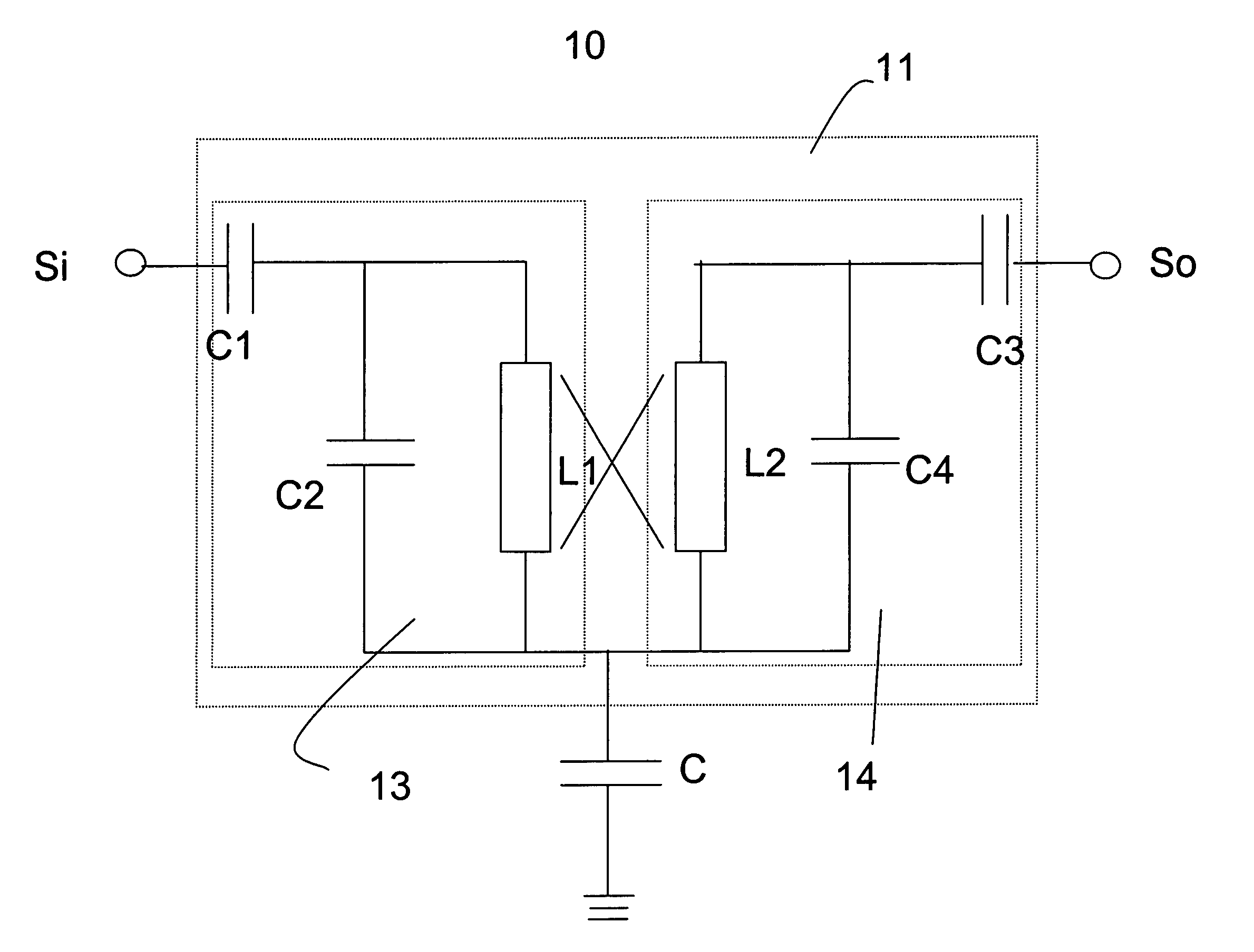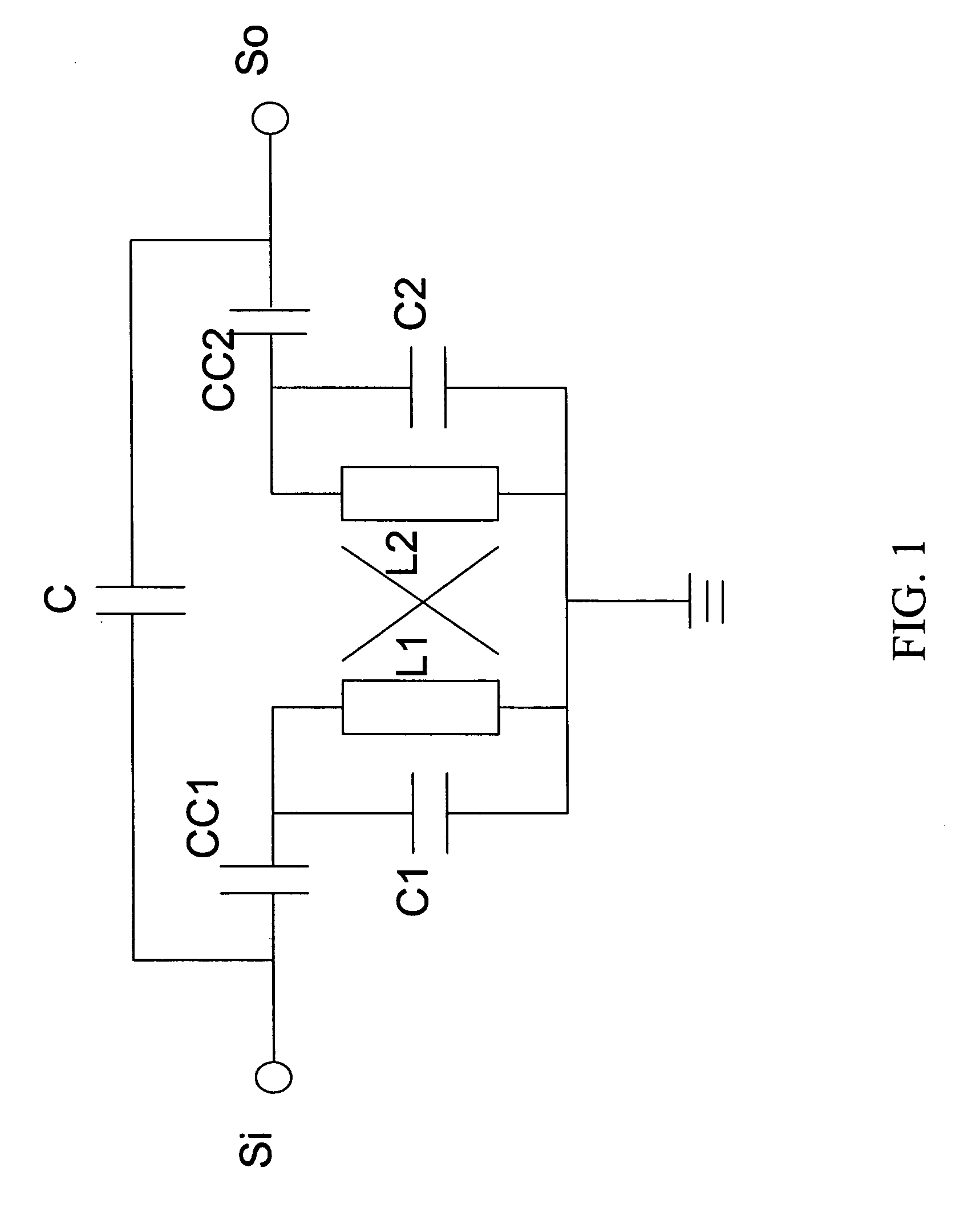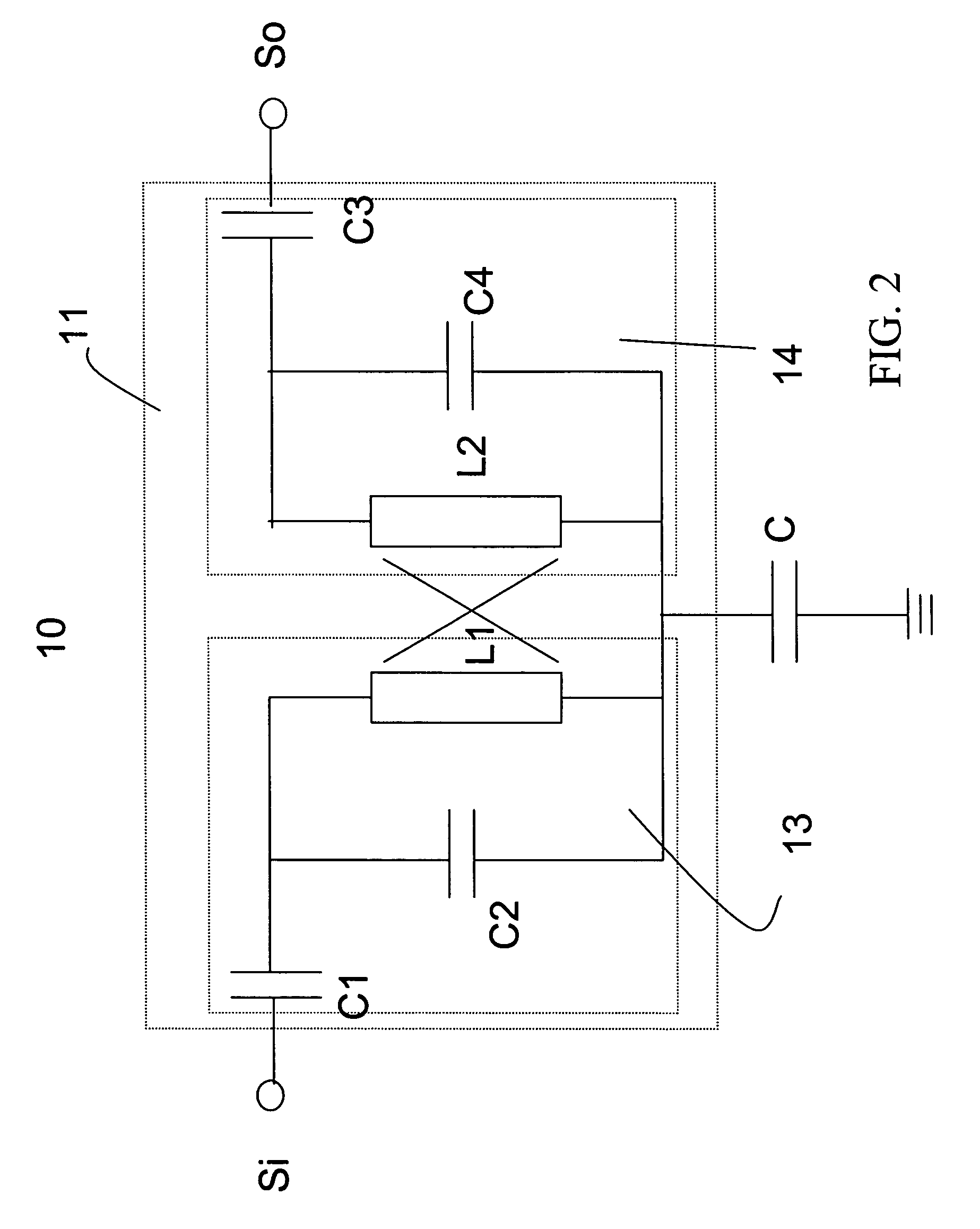Second order bandpass filter
a filter and bandpass technology, applied in the field of bandpass filter, can solve the problems of poor signal reception at the receiver, affecting the efficiency of noise filtering, and unable to provide a good suppression over interference signals, etc., to achieve efficient filtering of noise, low insertion loss, and good use
- Summary
- Abstract
- Description
- Claims
- Application Information
AI Technical Summary
Benefits of technology
Problems solved by technology
Method used
Image
Examples
Embodiment Construction
[0019] The present invention discloses a second-order bandpass filter, which will be described taken from the preferred embodiments with reference to the annexed drawings.
[0020]FIG. 2 shows a schematic structure diagram of a second-order bandpass filter according to the present invention. As shown, the second-order bandpass filter 10 comprises a two-port network 11 and a grounding capacitor C. The two-port network 11 comprises a first port 13 and a second port 14. An input signal Si is inputted at the first port 13 and an output signal So is outputted at the second port 14.
[0021] The first port 13 comprises a first blocking capacitor C1, a first resonance capacitor C2 and a first resonance inductor L1. The input signal Si is first inputted to the first blocking capacitor C1 at one end and a DC component thereof is filtered out. The first resonance capacitor C2 is coupled electrically to the other of the first blocking capacitor C1 at one end. The first resonance inductor L1 is cou...
PUM
 Login to View More
Login to View More Abstract
Description
Claims
Application Information
 Login to View More
Login to View More - R&D
- Intellectual Property
- Life Sciences
- Materials
- Tech Scout
- Unparalleled Data Quality
- Higher Quality Content
- 60% Fewer Hallucinations
Browse by: Latest US Patents, China's latest patents, Technical Efficacy Thesaurus, Application Domain, Technology Topic, Popular Technical Reports.
© 2025 PatSnap. All rights reserved.Legal|Privacy policy|Modern Slavery Act Transparency Statement|Sitemap|About US| Contact US: help@patsnap.com



